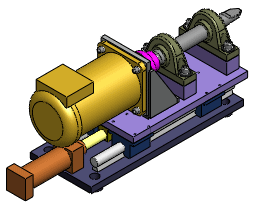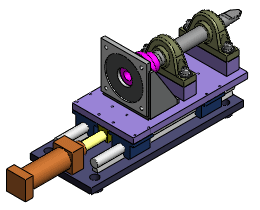Use display states to show components differently within a model. The components are the same from one display state to another. Only the way the components are displayed changes. For example, you might create display states to:
- Hide some components while you work on others.
- Display several related components in the same color.
- Show the model at various stages of assembly, for a presentation or a technical manual.
Use configurations to create different versions of a model. Components are different from one configuration to another. For example, you might create:
- One configuration that uses metal components and another that uses plastic ones.
- Multiple configurations that use different sizes of similar components.
- Configurations with the assembly's components in different positions.
- A simplified configuration of a model for use in analysis.
- In large assemblies, one configuration with fully resolved components and another with lightweight components.
Switching from one configuration to another can slow performance, especially in large assemblies, because the software is essentially loading a different model. Switching from one display state to another is relatively fast because the model data is already loaded.
Examples: Configurations
For the following assembly, suppose your company sells three versions:
- With a large motor
- With a small motor
- Without a motor
You create three configurations of the model, to reflect the different hardware contained in each version. The bill of materials for each configuration is different.
 |
| Configuration: Large Motor
|
 |
| Configuration: Small Motor
|
| Uses a smaller motor component and associated hardware.
|
 |
| Configuration: No Motor
|
| The motor and associated hardware are suppressed.
|